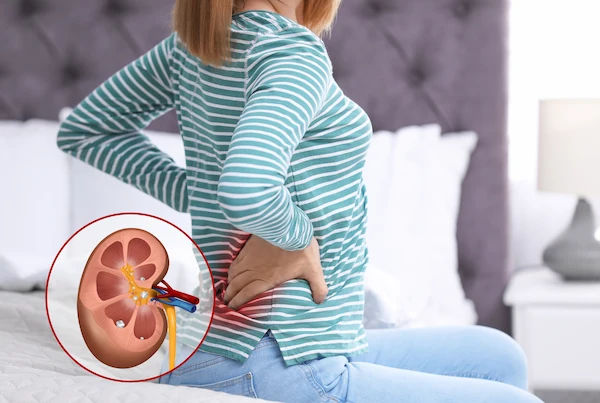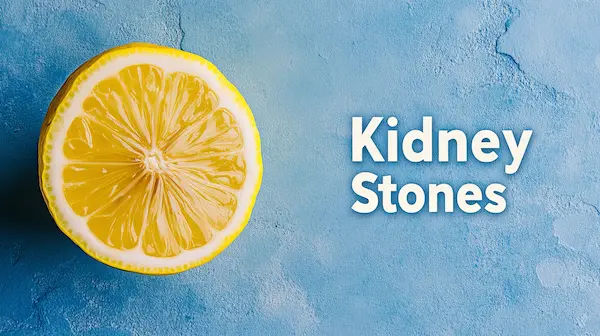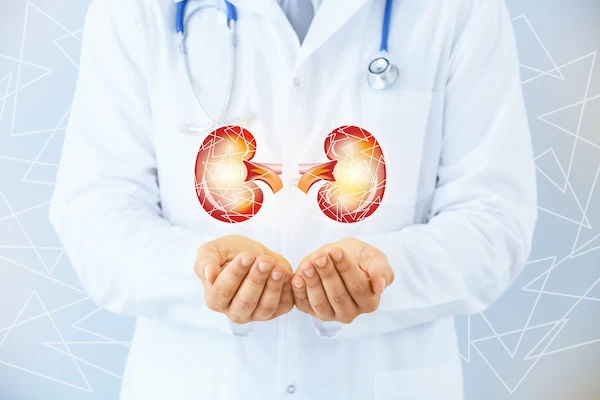Guide to What Extracorporeal Shockwave Lithotripsy Easel
Discover Extracorporeal Shockwave Lithotripsy (ESWL)—the non-invasive solution for breaking up kidney stones. Learn how the procedure works, who is a candidate, and what to expect during recovery.

Written by Dr. Siri Nallapu
Reviewed by Dr. D Bhanu Prakash MBBS, AFIH, Advanced certificate in critical care medicine, Fellowship in critical care medicine
Last updated on 29th Oct, 2025
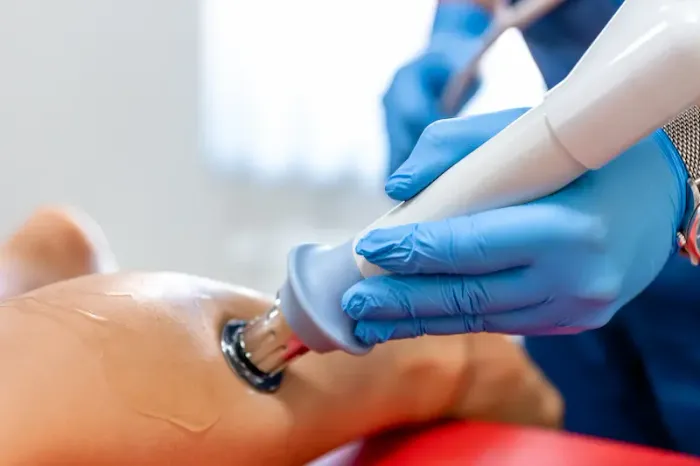
Introduction
If you or a loved one has a painful kidney stone, you’ve probably heard about extracorporeal shock wave lithotripsy—often shortened to ESWL. You’ll also see it written (and misspelled) as "extracorporeal" ESWL in many places. This non-invasive treatment uses focused sound waves from outside the body to break kidney or ureter stones into tiny pieces, so they can pass naturally in your urine. For the right person and the right stone, ESWL can be highly effective, avoiding surgical incisions and offering a quick return to normal life.
This guide explains ESWL in plain language: how it works, who benefits most, how to prepare, what happens during and after the procedure, typical recovery time, and how to prevent future stones. We also compare ESWL to ureteroscopy and PCNL, discuss risks and safety tips, and share insights your urologist wants you to know—like how stone density (measured in Hounsfield units) and skin-to-stone distance influence success. Whether you’re exploring your first kidney stone treatment or deciding among options, this evidence-informed, patient-focused guide to extracorporeal ESWL will help you feel prepared for a confident conversation with your care team.
ESWL 101: What "extracorporeal shockwave lithotripsy” really means?
How do shock waves break stones (the physics, made simple)?
ESWL stands for extracorporeal shock wave lithotripsy—“extracorporeal” meaning outside the body, “shock waves” referring to high-energy pressure waves, and “lithotripsy” meaning stone-breaking. A machine called a lithotripter generates controlled acoustic shock waves that travel through soft tissue and concentrate on the stone using imaging guidance (X-ray fluoroscopy or ultrasound). The sudden pressure changes at the stone surface and within its tiny cracks cause the stone to fragment. Over thousands of shocks (often 2,000–3,000 in one session), the stone breaks into grains that can pass in the urine over days to weeks.
ESWL vs. “extracorporeal shock wave therapy” for other conditions
Don’t confuse kidney-stone ESWL with shock wave therapy used for tendons or plantar fasciitis. Those devices use different energy levels and targets. ESWL for stones is focused on a specific point (the stone), often guided by imaging, and usually performed by a urologic team in a hospital or day-surgery suite. Consult a Top General Physician
Which stones does ESWL target best (kidney vs ureter)?
ESWL works best for kidney stones and upper ureter stones up to about 10 mm, sometimes up to 20 mm, depending on composition and patient factors. Softer stones (like uric acid) and intermediate-density calcium stones often fragment better than very hard stones (such as cystine or brushite). Lower ureter stones are more commonly treated with ureteroscopy, though ESWL may still be an option in select cases.
Unique insight: Two measures help predict ESWL success that many patient pages skip—stone density on CT (Hounsfield units, or HU) and skin-to-stone distance (SSD). Stones with density under roughly 1,000 HU and SSD under 10 cm generally respond better to shock waves, while very dense stones may be better handled with ureteroscopy.
Am I a candidate? Indications and who benefits most?
Stone size, location, and density (Hounsfield units) explained
Candidacy starts with size and location. ESWL has the highest success for:
• Renal stones ≤10 mm, especially in the renal pelvis or upper/middle calyces.
• Proximal ureter stones ≤10 mm.
• CT density under ~1,000 HU tends to fragment more readily.
Lower-pole kidney stones may clear less efficiently after ESWL due to gravity-dependent drainage angles. Stones above 10–20 mm, staghorn stones, or very dense stones (e.g., brushite) are less likely to clear and may need ureteroscopy or PCNL.
Patient factors: BMI, anatomy, and medical history
A greater skin-to-stone distance and higher BMI can reduce shock energy reaching the stone, decreasing success. Abnormal urinary anatomy (e.g., ureteral strictures) can slow fragment clearance. Bleeding disorders or blood-thinner use increase bleeding risk. Active urinary infections should be treated before ESWL.
Special populations: children, pregnancy, and older adults
• Children: ESWL is used widely and safely in children with appropriate settings, often with excellent outcomes given softer stone profiles.
• Pregnancy: ESWL is contraindicated in pregnancy due to fetal risk. Temporary drainage or ureteroscopy may be preferred.
• Older adults: ESWL can be safe if cardiovascular and bleeding risks are optimized.
Unique insight: If you’ve had prior stenting or ureteroscopy, that doesn’t rule out ESWL. In fact, a temporary ureteral stent may be placed in select cases to help fragments drain, though routine pre-stenting for ESWL is generally not recommended unless the risk of blockage is high.
Safety first: Risks, contraindications, and how centers reduce them?
Absolute vs relative contraindications
Absolute contraindications typically include:
• Pregnancy
• Uncontrolled bleeding disorders or inability to stop anticoagulation when necessary
• Untreated urinary tract infection (UTI)
• Uncorrected distal urinary obstruction
Relative contraindications may include severe obesity with a very large skin-to-stone distance, certain vascular aneurysms near the treatment path, or pacemaker/ICD considerations (usually manageable with cardiology input).
Common side effects vs rare complications (steinstrasse, hematoma)
Common effects:
• Blood in urine (hematuria) for 24–72 hours
• Bruising or soreness on the flank/abdomen
• Crampy pain (renal colic) as fragments pass
• Temporary need to strain urine to catch fragments
Less common complications:
• Steinstrasse (“stone street”): a line of fragments temporarily blocking urine flow, causing colic; often managed with hydration, pain control, and sometimes a ureteral stent or ureteroscopy. Reported rates vary, often a few percent.
• Urinary infection or fever; rarely sepsis—more likely if the stone was infected.
• Perirenal hematoma (collection of blood around the kidney), generally rare and usually managed conservatively.
Techniques that improve safety (energy ramping, shock rate)
Modern best practices include:
• Energy ramping: starting at a lower energy and then increasing to reduce tissue injury.
• Lower shock rates (around 60–90 shocks/min) may improve fragmentation and reduce damage compared to faster rates.
• Ultrasound guidance can reduce radiation exposure; some centers use combined ultrasound and fluoroscopy for precise targeting.
Unique insight: Ask whether your center uses energy ramping and a moderate shock rate; these protocol choices—though not always mentioned—can make your ESWL safer and more effective.
Preparing for ESWL and what to expect on the day?
Pre-procedure evaluation: urine tests, imaging, and medications
Typical pre-ESWL work-up includes:
• Urinalysis and urine culture to rule out infection
• Imaging to localize and measure the stone (KUB X-ray, ultrasound, or low-dose CT)
• Review of medications: blood thinners (e.g., warfarin, DOACs), antiplatelets, and certain supplements may need temporary adjustment under medical guidance
If lab tests are needed (e.g., urine culture, kidney function), Apollo 24|7 offers convenient home collection options in many locations.
Anesthesia and pain control options
ESWL may be performed with:
• Light sedation and analgesia (most common)
• Regional or general anesthesia in some centers or for children
You’ll usually fast for a few hours before sedation. Discuss prior anesthesia reactions and current medications with your team.
Step-by-step walk-through of the ESWL procedure
• Positioning: You’ll lie on a table with a water cushion or gel interface that transmits shock waves.
• Targeting: Imaging (fluoroscopy or ultrasound) is used to focus the shock wave focal point on the stone.
• Treatment: 2,000–3,000 shocks delivered over 30–60 minutes, with energy ramping. You may feel thumps or discomfort; sedation helps.
• After: You’ll be monitored briefly, then discharged with instructions on hydration, pain control, and straining urine to collect fragments for analysis.
Unique insight: If your stone is visible on ultrasound, an ultrasound-guided ESWL can reduce radiation exposure. If not, fluoroscopy is the standard. Some modern lithotripters combine both for superior targeting.
Recovery and aftercare: Timeline, pain control, and red flags
Passing fragments and staying comfortable
• Most people go home the same day. Expect:
• Pink or red urine for up to 2–3 days
• Mild soreness or flank bruising
• Intermittent crampy pain as fragments pass over days to a few weeks
Hydration is key: aim for clear, pale-yellow urine unless your doctor advises fluid restriction. Gentle activity (walking) can help fragments move. Return to work varies—often 1–3 days, depending on your job and symptoms.
Medications (alpha-blockers, analgesics, antibiotics) and hydration
• Pain medicines: NSAIDs or prescribed analgesics as directed.
• Alpha-blockers (e.g., tamsulosin) may help pass ureteric fragments faster and reduce colic in some patients.
• Antibiotics: Only if you had a documented infection or higher risk; routine prophylaxis is not always necessary—follow your clinician’s plan.
• Strain urine to collect fragments; your team may analyze them to guide prevention.
When to call a doctor and how Apollo 24|7 can help?
Seek care urgently if you have:
• Fever/chills or persistent high fever
• Severe, unrelenting pain unresponsive to medication
• Inability to pass urine or worsening flank pain (possible obstruction)
• Heavy bleeding in urine after 72 hours or passing clots
If symptoms persist beyond two weeks or pain worsens, consult a doctor online with Apollo 24|7 for further evaluation, or book a physical visit if urgent. If repeat labs or urine tests are needed, Apollo 24|7 offers home collection in many areas.
Unique insight: Many patients worry if they still “see a stone” on imaging soon after ESWL. It’s common to have residual fragments—often called clinically insignificant residual fragments (CIRF) if ≤4 mm—which may pass over time or remain without symptoms. Your urologist will advise on next steps.
Results and alternatives: Success rates, repeat sessions, and other procedures
What “stone-free” means, success by stone type/size/location?
ESWL success is typically defined as achieving stone-free status or only very small leftover fragments (≤4 mm). For ideal candidates—renal or proximal ureter stones ≤10 mm and moderate density—success rates are often reported in the 70–90% range after one or sometimes two sessions. Lower pole stones and very hard stones show lower clearance.
ESWL vs ureteroscopy vs PCNL: pros and cons
• ESWL: Non-invasive, no incisions, minimal downtime; may need repeat sessions; lower immediate stone-free rates for hard/lower-pole stones.
• Ureteroscopy (URS): Endoscopic laser fragmentation, high stone-free rates in one session, especially for ureter stones; requires anesthesia; small risk of ureter injury; often a temporary stent.
• PCNL (percutaneous nephrolithotomy): Best for large (>20 mm) or complex (staghorn) stones; highest clearance in one procedure; involves a small back incision and hospitalization.
Choice depends on stone size, location, density, your anatomy, comorbidities, and preference.
Stents, repeat ESWL, and combination strategies
A ureteral stent may be inserted before or after ESWL if there’s risk of blockage (steinstrasse), infection, or poor drainage. Routine pre-stenting for ESWL is not always needed. Some patients benefit from repeat ESWL or a staged approach—ESWL first, then URS for residuals.
Unique insight: Discuss Hounsfield units and skin-to-stone distance from your CT report. If your stone is very dense (e.g., >1,000–1,200 HU) or you have a long skin-to-stone distance, ureteroscopy may offer a better first-time clearance.
Long-term plan: Preventing future stones and follow-up
Diet, hydration, and practical prevention tips
• Hydration: Target 2 -- 2.5 liters urine/day (unless restricted).
• Diet: Moderate sodium, normal calcium intake from food, limit excessive animal protein, and reduce high-oxalate foods if you have calcium oxalate stones. Citrus (lemon/lime) may increase citrate, which helps prevent stones.
• Weight and activity: Maintain a healthy weight and regular exercise.
Metabolic evaluation and relevant tests (home collection options)
Your urologist may recommend:
• Stone analysis (if fragments retrieved)
• Blood tests: kidney function, calcium, uric acid
• 24-hour urine test for stone-forming risks (calcium, oxalate, citrate, uric acid volume)
Apollo 24|7 offers a convenient home collection for many lab tests; check availability in your city.
Follow-up imaging: when and why
Follow-up ultrasound, KUB X-ray, or low-dose CT is often done weeks to months after ESWL to assess residual fragments. The schedule depends on symptoms, stone type, and your urologist’s protocol.
Unique insight:
Low-dose CT protocols now exist specifically for stones, reducing radiation exposure while still providing precise stone measurements and density data for future planning.
Cost, access, and choosing a center
Typical cost ranges and insurance basics
• Costs vary widely by country, hospital type, and whether anesthesia or additional imaging is included. In India, ESWL may range roughly from INR 40,000 to 1,50,000 or more, depending on the city and center; in the U.S., charges can be much higher before insurance. Confirm:
• Facility fee and professional fee
• Anesthesia charges
• Imaging and follow-up costs
• Whether a second ESWL session is included if needed
What to ask your urologist (technology, experience, success rates)?
• Do you use ultrasound, fluoroscopy, or both for targeting?
• What is your protocol for energy ramping and shock rate?
• What’s my stone density (HU) and size, and how does that affect ESWL success?
• What are your center’s stone-free and retreatment rates for stones like mine?
• Will I need a stent? What’s the plan if ESWL doesn’t clear everything?
Patient checklist before you book ESWL
• Upload or bring your latest imaging and lab results.
• Review all medications and supplements with your team.
• Arrange transport and a light schedule for a couple of days post-procedure.
• Know whom to call after hours if severe pain or fever develops.
Unique insight: Center experience and protocol details (ramping, rate, imaging) matter as much as the lithotripter model. A conversation about these specifics often predicts your experience better than brand names alone.
Conclusion
Extracorporeal ESWL is a proven, non-invasive option for many kidney and upper ureter stones—especially those around 10 mm or smaller and of moderate density. When chosen for the right patient and stone, it offers the convenience of a day procedure, minimal downtime, and good chances of clearing the stone with little to no incision. Understanding key predictors—like stone size, location, Hounsfield units, and skin-to-stone distance—helps set realistic expectations about success and whether ESWL is the best first step or if ureteroscopy or PCNL might be better.
Your preparation and aftercare matter, too. Arrive informed about medications, treat any urinary infection beforehand, and plan for hydration and pain control afterward. Ask about your center’s protocols (energy ramping, shock rate) and targeting method (ultrasound versus fluoroscopy), as these influence both safety and success. If at any point symptoms worsen—severe pain, fever, or difficulty urinating—seek medical care promptly. If your condition does not improve after trying these methods, book a physical visit to a doctor with Apollo 24|7. For labs or urine tests, Apollo 24|7 offers a convenient home collection.
Consult a Top General Physician
Consult a Top General Physician

Dr. Mohammed Kamran
General Practitioner
5 Years • MBBS, FIDM
Nashik
Apollo 24|7 Clinic - Maharashtra, Nashik

Dr. Shubham Chauhan
General Practitioner
4 Years • MBBS
Lucknow
Apollo 24|7 Clinic - Uttar Pradesh, Lucknow

Dr. Dhankecha Mayank
General Practitioner
6 Years • MBBS
Hyderabad
Apollo 24|7 Clinic - Telangana, Hyderabad
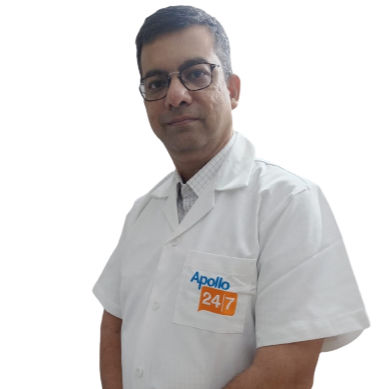
Dr. Rajib Ghose
General Physician/ Internal Medicine Specialist
25 Years • MBBS
East Midnapore
VIVEKANANDA SEBA SADAN, East Midnapore
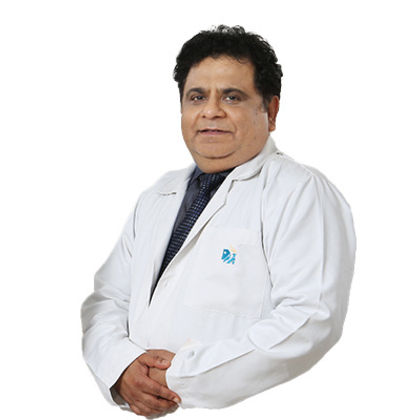
Dr. Anand Misra
General Physician/ Internal Medicine Specialist
14 Years • MBBS, DNB
Mumbai
Apollo Hospitals CBD Belapur, Mumbai
Consult a Top General Physician

Dr. Mohammed Kamran
General Practitioner
5 Years • MBBS, FIDM
Nashik
Apollo 24|7 Clinic - Maharashtra, Nashik

Dr. Shubham Chauhan
General Practitioner
4 Years • MBBS
Lucknow
Apollo 24|7 Clinic - Uttar Pradesh, Lucknow

Dr. Dhankecha Mayank
General Practitioner
6 Years • MBBS
Hyderabad
Apollo 24|7 Clinic - Telangana, Hyderabad

Dr. Rajib Ghose
General Physician/ Internal Medicine Specialist
25 Years • MBBS
East Midnapore
VIVEKANANDA SEBA SADAN, East Midnapore

Dr. Anand Misra
General Physician/ Internal Medicine Specialist
14 Years • MBBS, DNB
Mumbai
Apollo Hospitals CBD Belapur, Mumbai
More articles from Kidney stones
Frequently Asked Questions
1) How long is the recovery after shock wave lithotripsy?
Most people resume light activity within 1–3 days. You may pass from fragments for days to weeks. Mild blood in urine and flank soreness are common for a few days. Seek care for severe pain, fever, or urinary blockage. (Related keyword: shock wave lithotripsy recovery time)
2) Is ESWL better than ureteroscopy?
Neither is “always better.” ESWL is non-invasive but may require repeat sessions; ureteroscopy often clears stones in one go, especially in the ureter, but it involves anesthesia and endoscopic instruments. Your stone’s size, location, and density guide the choice. (Related keyword: ESWL vs ureteroscopy, which is better)
3) What are the main risks of extracorporeal shockwave lithotripsy?
Common effects: temporary blood in urine, bruising, crampy pain from fragment passage. Less common: steinstrasse (fragment blockage), infection/fever, and rarely a perirenal hematoma. Risks are minimized with proper selection and protocols. (Related keyword: extracorporeal shockwave lithotripsy risks)
4) Do I need medications after ESWL?
Often you’ll use pain relievers and may be prescribed an alpha-blocker like tamsulosin to help pass fragments. Antibiotics are used if you have an infection or high-risk factors. Always follow your urologist’s advice. (Related keyword: alpha blockers after ESWL tamsulosin)
5) How do I prevent stones after ESWL?
Hydrate to produce 2 -- 2.5 L of urine daily, moderate salt, keep normal dietary calcium, limit excess animal protein, and tailor diet to your stone type. A metabolic work-up (including 24-hour urine) guides personalized prevention. Apollo 24|7 can help with home collection for relevant tests. (Related keyword: stone prevention diet after ESWL)
.webp)

